

|
Sinking of HMS Barham
During the Second World War, the British possessed the most powerful navy in the world – indeed many battleships were attacked during the war, but only three were ever sunk. The HMS Royal Oak, a Royal Sovereign class dreadnought, the HMS Prince of Wales, a King George V class and the HMS Barham, a Queen Elizabeth class, which was a modernized warship from World War One.
The connection of the U-boat threat with these sinkings was clearly evident as of these three battleships sunk, two were the direct result of U-boat attacks. The HMS Royal Oak was torpedoed by U-47 in Scapa Flow and the HMS Barham was torpedoed by U-331 (Tiesenhausen) in the Mediterranean. The third battleship sunk was the HMS Prince of Wales, the most powerful and modern warship in the Royal Navy when she was torpedoed and bombed by Japanese aircraft.
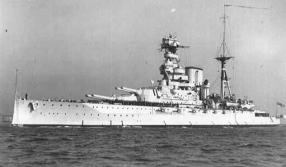
|
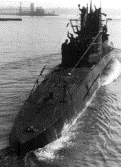
|
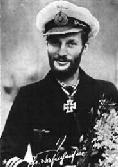
|
| HMS Barham, a Queen Elizabeth class battleship. | The U-331, a Type VII U-boat. | Tiesenhausen, commander of U-331. |
The HMS Barham was one of five fast battleships of the Queen Elizabeth class. Commissioned on August 1915, she displaced 29,150 tons and was intended to replace battlecruisers as the main offensive thrust during an engagement. A veteran of World War One, she received six hits during the Battle of Jutland. After modernization during 1927-28, she served in the Mediterranean until war broke out in 1939, when she was reassigned to the Home Fleet
During the Second World War, a spate of misfortunes had dogged the HMS Barham. On December 12 1939, she collided with a destroyer, the HMS Duchess, sinking her in the mishap. A fortnight later, she was attacked by the U-30 which put her out of commission for six months with a single torpedo hit. Reassigned to the Mediterranean Fleet, she was damaged by the French battleship Richelieu during an attempt to capture Dakar on September 1940. She was again attacked and damaged by Luftwaffe aircraft on May 1941, during the German airborne invasion of Crete. Thereafter, she saw some action in Libya, where her 15 inch guns were put to good effect against Rommel’s forces entrenched in Bardia.
Meanwhile, the fighting in Africa had reached to new intensities. The British 8th Army and Rommel’s Afrika Korps were locked in a stalemate. Control of Africa was important to the British, who had intended to use it as a staging area to counterattack the Axis by first crushing Italy, then Germany by attacking through the soft underbelly of Italy and the Balkans. British warships continued to harass Rommel’s convoy lines through the Mediterranean and bombarded his supply depot at Tripoli with devastating effect. One third of his supplies were not getting through. Meanwhile, the 8th Army was supplied through the friendly port fortress of Tobruk. When British intelligence revealed that Rommel intended to launch an all-out offensive to take Tobruk, they responded with their own all-out offensive – Operation Crusader. Coupled with the belief that the British intended to make an amphibious landing at Algeria to trap Axis forces in a pincer, Hitler declared an “emergency”. The Kriegsmarine was to put an end to the Royal Navy’s dominance of the Mediterranean and to halt all British attacks on Rommel’s supply ships. Every available U-boat, which numbered to fifty, was committed to the task and diverted to the Mediterranean basin.
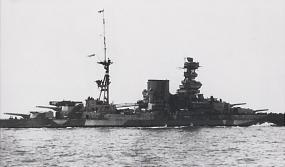
|
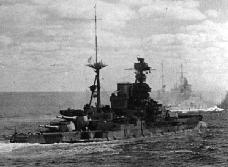
|
| The HMS Barham, assigned to the Mediterranean Fleet under Admiral Sir Andrew Cunningham. | |
The U-331, commanded by von Tiesenhausen was one of the Type VIIs who made its harrowing entry into the Mediterranean. Having dropped off a German commando party at Libya on November 17 (which was to blow up a British military train), the U-331 was patrolling submerged on the morning of November 25 near the British base at Alexandria, Egypt. Having been alerted by the sounds of heavy screws, the U-331 chased down on its bearing. Soon, the U-331 surfaced to periscope depth and spotted a procession of three British battleships flanked by eight destroyers. The battleships were the Queen Elizabeth, Barham and Valiant.
A heart stopping sight, von Tiesenhausen carefully threaded between two destroyers and eased his boat to the first battleship in line, the Queen Elizabeth. But she had just passed by and he was forced to target the second battleship in line, the HMS Barham. At 410 yards, the behemoth size of the battleship had completely filled his periscope lens. He could not identify what ship it was, just that it was a British battleship. He fired all four torpedoes, and immediately the U-331 popped to the surface, having just released four tons of weight from the boat. The third battleship in line, the HMS Valiant was just 150 yards away, spotted the boat and immediately signaled the Barham and altered course to ram.
Aboard the U-331, von Tiesenhausen ordered for a crash dive. The boat’s helmsman hurriedly flooded the ballast tanks and flanked the engines at full speed ahead. As the huge ship, the HMS Valiant bore down on them, finally at the last moment, the U-331 slid beneath the waves and the battleship passed harmlessly overhead.
In the meantime, the HMS Barham swerved to avoid the incoming torpedoes. One torpedo missed, but three others found its target on her broadside. Three explosions were heard – one, two, three - and one or more of the torpedoes hit near a magazine. A fourth thunderous explosion resulted, probably the magazine going up, disintegrating the Barham, taking 862 men with her in three minutes.
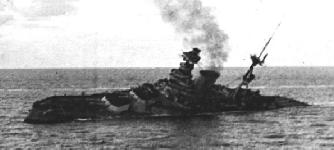
|
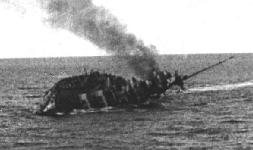
|
| Sinking of the HMS Barham. | |
Meanwhile, von Tiesenhausen did not sit around to watch his kill. The crash dive on the U-331 was going out of control. The depth gauge inexplicably slowed and stopped at 250 feet. But the crew sensed that the boat was still continuing its descend – but the depth gauge said they were level at 250 feet. It was a dangerous situation as the safe diving depth of the Type VIIC was 330 feet (100 meters). Tiesenhausen ordered for a second reading from the forward room compartment. The results appalled the entire crew – the U-331 was at an unprecedented depth of 820 feet. The maximum crush depth of the Type VII was 650 feet. According to the manufacturer’s specifications, they should have been crushed by now. The crew frantically set the forward dive planes up, blow ballast tanks, and the boat eventually began its ascend until it reached safe depths. They were astonished, not only to have survived the lethal depths below, but the hull which should have been crushed, did not as much as spring a leak.
Lieutenant Hans-Diedrich Freiherr von Tiesenhausen, the commander of U-331 would summarize the attack many years later – to have escaped the enemy above, and the lethal depths below “In such moments you do not speak. You are glad to have been lucky and to be still alive.”
Von Tiesenhausen anxiously waited for news of the sinking to be announced by the Admiralty. Afterall, he did not know which ship he had attacked. He had reported to Donitz that he had torpedoed a battleship, but in the depths below, he was critically concerned about his crush depth than to worry about the enemy above. The British withheld news of the sinking, and in the absence of evidence, Donitz withheld his praise saying only that the attack was “very satisfactory”. However when the Admiralty finally announced the loss of the Barham on late January 1942, von Tiesenhausen was awarded a Knight’s Cross.
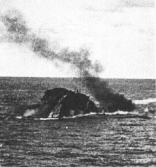
|
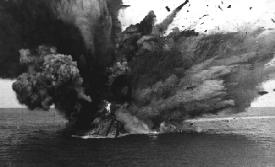
|
| The HMS Barham turns over and the magazine section explodes, obliterating the ship. | |
The opening of the U-Boat offensive in the Mediterranean coincided with the highwater mark of Axis victories at sea. Beginning on November 10 1941, and for the next 40 days, the Axis forces combined had sunk the aircraft carrier Ark Royal, an escort carrier Audacity, two battleships the Prince of Wales and Barham, the battlecruiser Repulse, three cruisers the Dunedin, Neptune and Galatea, seriously damaged two battleships the Queen Elizabeth and Valiant, plus damage to many other warships.
It should be noted however that not all of the attacks occurred in the Mediterranean or were the direct result of U-boats. Only the Ark Royal, Barham and Galatea were sunk by U-boats in the Mediterranean basin.
Nevertheless, the magnitude of losses likened the British to their own version of “Pearl Harbor” during these forty days, that it temporarily broke the Royal Navy’s command of the Mediterranean. It was unable to provide the much needed support for the British’s 8th Army Operation Crusader, and partly as a result, the 8th Army was bogged down and ran out of steam at Libya. Rommel’s Afrika Korps dug in at El Agheila and another stalemate in the North African desert campaign ensued.
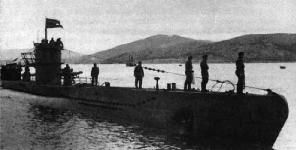
|
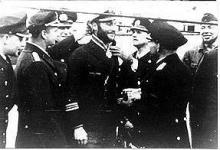
|
| U-331 and von Tiesenhausen receiving his Knight's Cross. U-boat captains used to joke of an itchy neck that could only be cured by administering the red, white and black ribbon of the Knight's cross on the neck. | |



